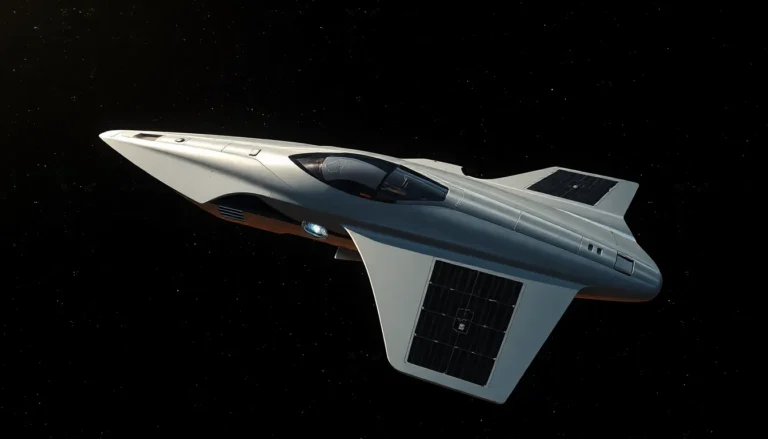Table of Contents
ToggleIn a world where time is money and patience is a virtue few can afford, fast charging has become the superhero we didn’t know we needed. Gone are the days of waiting hours for devices to power up. With the flick of a switch and the right technology, a mere coffee break can transform a drained battery into a fully charged powerhouse.
Overview of Fast Charging
Fast charging technology enhances the speed at which batteries recharge, streamlining the user experience for electronic devices. Different methods exist, including Qualcomm Quick Charge, USB Power Delivery, and proprietary systems like Apple’s Fast Charge. Each technology claims unique benefits, yet they all prioritize reducing charging time significantly.
Charging standards vary globally, necessitating compatibility checks between chargers and devices. Chargers that support higher wattages can deliver more power, which accelerates charging. Many commonly used devices, such as smartphones and laptops, now incorporate fast charging capabilities, making daily use more efficient.
Users benefit from quick top-ups, often powering up devices in under an hour. For instance, a smartphone may charge to 50% in just 30 minutes. Convenience plays a vital role, as busy lifestyles demand efficient solutions for battery management.
Potential risks accompany fast charging technology. Excessive heat can degrade battery life, making protective measures essential. Manufacturers often include features to mitigate these risks, such as temperature regulation and adaptive charging. Understanding device specifications helps the user make informed choices.
Evolving technology continues to push the boundaries of fast charging. Companies invest in research to develop faster, safer charging solutions. Future advancements may lead to even shorter charging times, transforming how users interact with their devices. Fast charging represents a significant shift, enabling a more seamless integration of technology into everyday life.
How Fast Charging Works

Fast charging technology utilizes advanced methods to deliver higher power levels to devices, drastically reducing charging time. Understanding charging techniques and battery chemistry provides insights into how this process efficiently powers devices.
Charging Techniques
Numerous charging techniques exist, each featuring unique capabilities. Qualcomm Quick Charge delivers increased voltage to expedite charging without modifying current levels. USB Power Delivery adapts voltage and current on demand, enabling devices to draw power quickly. Proprietary systems like Apple’s Fast Charge also facilitate rapid charging by utilizing higher wattage chargers with compatible devices. Such advancements allow devices like smartphones and laptops to achieve significant charge levels, often reaching 50% in as little as 30 minutes.
Battery Chemistry
Battery chemistry plays a crucial role in fast charging efficiency. Lithium-ion batteries dominate the market due to their high energy density and longevity. These batteries can handle rapid charging cycles without significant degradation when equipped with appropriate protective measures. Thermoregulation mechanisms guard against overheating, maintaining battery health. Various manufacturers constantly improve battery formulations, enhancing their ability to support rapid charging while sustaining performance over time. Developments in solid-state batteries may reshape fast charging dynamics, making them even faster and safer.
Benefits of Fast Charging
Fast charging offers numerous advantages, making it a game changer in device usability. Its main perks include time efficiency and convenience.
Time Efficiency
Time efficiency represents a crucial benefit of fast charging technology. Users can achieve up to 50% battery charge in just 30 minutes, allowing them to power up devices during brief moments of downtime. High wattage chargers further enhance this efficiency, as they deliver increased power levels directly to devices. Reducing the reliance on lengthy charging sessions redefines the user experience, enabling individuals to remain productive or entertained. With various fast charging standards available, including Qualcomm Quick Charge and USB Power Delivery, users can quickly select compatible options that suit their devices, leading to shorter waits.
Convenience
Convenience plays a significant role in fast charging’s widespread adoption. Individuals can easily power their devices during their daily routines, whether at the office, in a café, or while commuting. Rapid recharging ensures that users stay connected without interruptions. Fast charging supports a wide variety of devices, from smartphones to laptops, making it versatile for everyday use. When needing a quick energy boost, users find that fast charging eliminates concerns about low battery levels while inspiring confidence in device reliability. The seamless integration of this technology into modern gadgets reflects its importance in today’s fast-paced lifestyle.
Challenges of Fast Charging
Fast charging technology presents several challenges despite its many advantages. These challenges impact battery lifespan and heat management.
Battery Lifespan
Fast charging often accelerates wear on lithium-ion batteries. Batteries subjected to rapid charging cycles can degrade faster than those charged slowly. Research indicates that charging at high rates may reduce overall battery lifespan by up to 30%. Manufacturers are addressing this by developing advanced battery chemistries. These innovations aim to support higher charge rates without significant degradation. Additionally, optimizing charging algorithms can enhance battery longevity. Effective management of charge cycles enables users to maximize their device’s lifespan and efficiency.
Heat Management
Heat management plays a vital role in fast charging safety and efficiency. Rapid charging generates more heat, risking battery damage and safety hazards. Studies show that excessive heat can lead to a decrease in battery performance and may even trigger thermal runaway. Device manufacturers implement multiple heat regulation strategies to combat these issues. For instance, advanced cooling systems and thermal management protocols may mitigate risks associated with heat buildup. Using high-quality chargers equipped with temperature sensors can also protect devices from overheating. Proper heat management is essential for maintaining device reliability during fast charging processes.
Future of Fast Charging Technology
Innovations in fast charging technology continue to evolve rapidly. Researchers focus on enhancing charging speeds while ensuring safety and efficiency. Progress in battery chemistry, particularly with solid-state batteries, holds potential for breakthroughs. Manufacturers aim to increase energy density, enabling batteries to charge faster without overheating.
Advancements in charging protocols will likely enhance compatibility across various devices. Various technologies, such as GaN (gallium nitride) chargers, promise higher efficiency and lower energy loss. These developments can further reduce charging times, making the user experience more seamless.
The integration of artificial intelligence in charging systems represents another significant trajectory. Intelligent algorithms can optimize charging rates based on user habits, extending battery lifespan while maintaining fast charge capabilities. Monitoring battery health during charging operations will allow users to receive alerts regarding performance issues.
Electric vehicles also benefit from advancements in fast charging technology. Rapid charging stations, utilizing higher wattage setups, enable EV drivers to recharge in mere minutes. With more investment in charging infrastructure, widespread adoption will occur, enhancing convenience and reducing range anxiety.
Future possibilities might even include wireless fast charging systems. These systems strive to eliminate the need for cables altogether, enhancing user convenience. As fast charging technology continues to progress, it will likely maintain its critical role in powering modern devices.
Stakeholders emphasize the importance of environmental sustainability as technology advances. Developing eco-friendly charging solutions will become a priority. Establishing recycling programs for batteries and chargers can further minimize environmental impact while supporting technological growth.
Fast charging technology has become a vital part of modern life. It not only enhances convenience but also transforms how users interact with their devices. As advancements continue in battery chemistry and charging systems, the future looks promising for even faster and safer charging solutions.
With the integration of intelligent algorithms and innovations like solid-state batteries, users can expect improved efficiency and longevity in their devices. The ongoing development of charging infrastructure for electric vehicles further underscores the importance of fast charging in promoting sustainability and reducing range anxiety.
Embracing fast charging means embracing a more efficient and connected lifestyle, ensuring that users stay powered up and ready to tackle their day.







